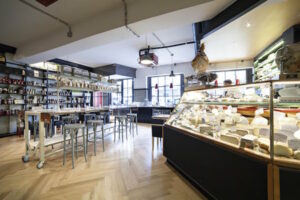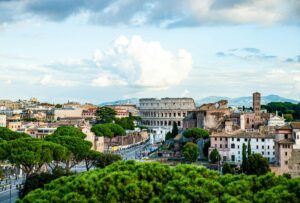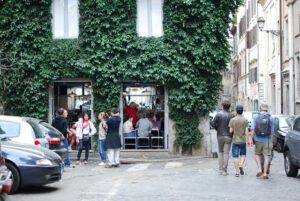Last Updated on October 29, 2025 by Emma Fajcz | Published: March 27, 2019
If you’re visiting the Eternal City anytime soon, there’s just one rule of thumb you have to live by: when in Rome, do as the Romans do–and that goes for dining out too! Don’t stick with the normal tourist fare—immerse yourself in all aspects of Rome’s culinary culture instead! From what to order (and when), to must-try local specialties, we’ve got some 7 expert tips on how to eat like a local in Rome.
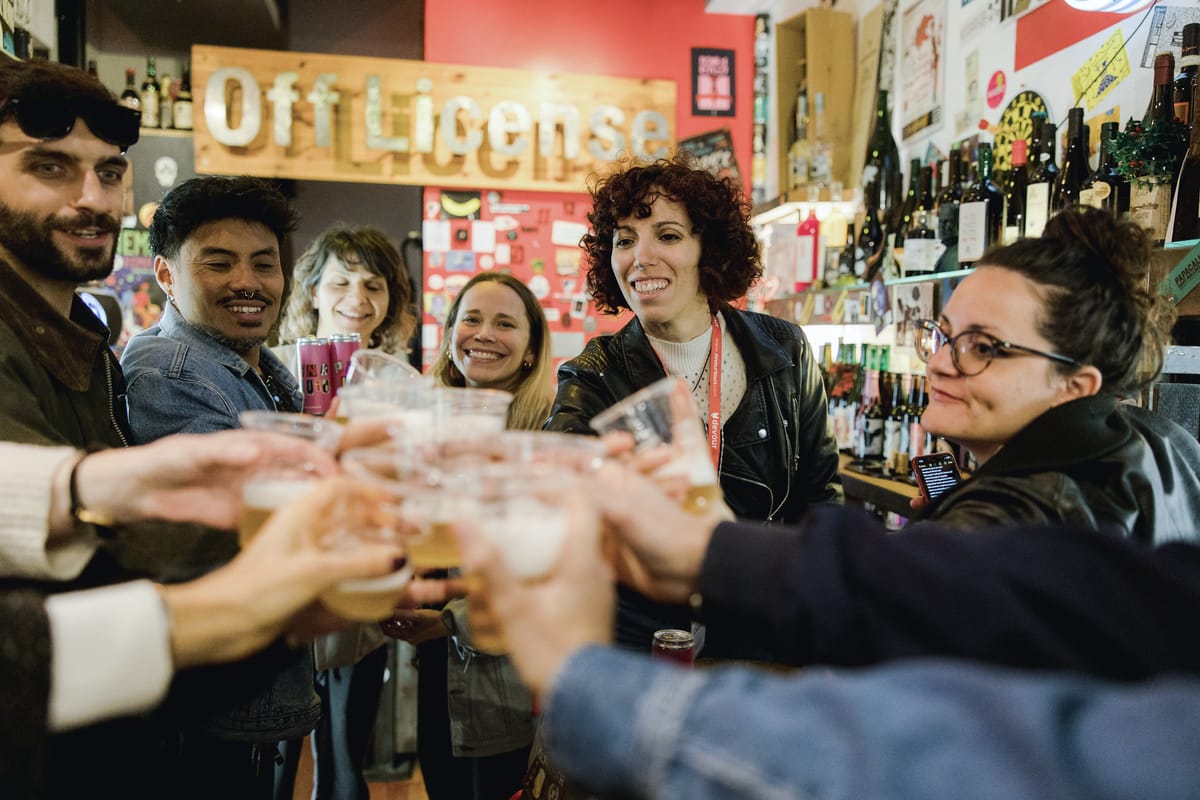
Table of Contents
1. Never have cappuccino with a meal
Every time pizza is ordered with a cappuccino on the side, an Italian gets chills down their spine. Why? Because cappuccino is exclusively a morning beverage.
If you want to eat like a local in Rome, no food apart from cornetti or sweet breakfast pastries should ever be ordered with a cappuccino. Instead, once you’re finished with your lunch or dinner, order an espresso. That’s how we Romans do it.
Start the day off with a delicious cappuccino for breakfast and you’ll make Italians very happy. Photo credit: David Mackey
2. Get your pizza for lunch by the slice
Rome is packed with things to see and do, which means you won’t always have time for a proper sit-down lunch. The good news? You can enjoy one of Rome’s signature foods—pizza al taglio (literally translated “pizza by the slice”)—on the go! Crispy, thick and with myriad toppings, pizza al taglio is worshipped in Rome.
All you have to do is get yourself to a pizzeria al taglio, grab a number, and choose how many slices you want of the different types of pizza. The pizza you choose then gets weighed and you’re given a receipt to pay. Once you’ve paid, you get your pizza and you’re free to enjoy it on the go!pizz
Insider’s Tip: Some of the best places for pizza by the slice in Rome are Alice Pizza (with dozens of locations in Rome), Pizzarium Bonci, and Antico Forno Roscioli (Via Dei Chiavari, 34). Another of our favorite places is CasaManco at the Testaccio Market.
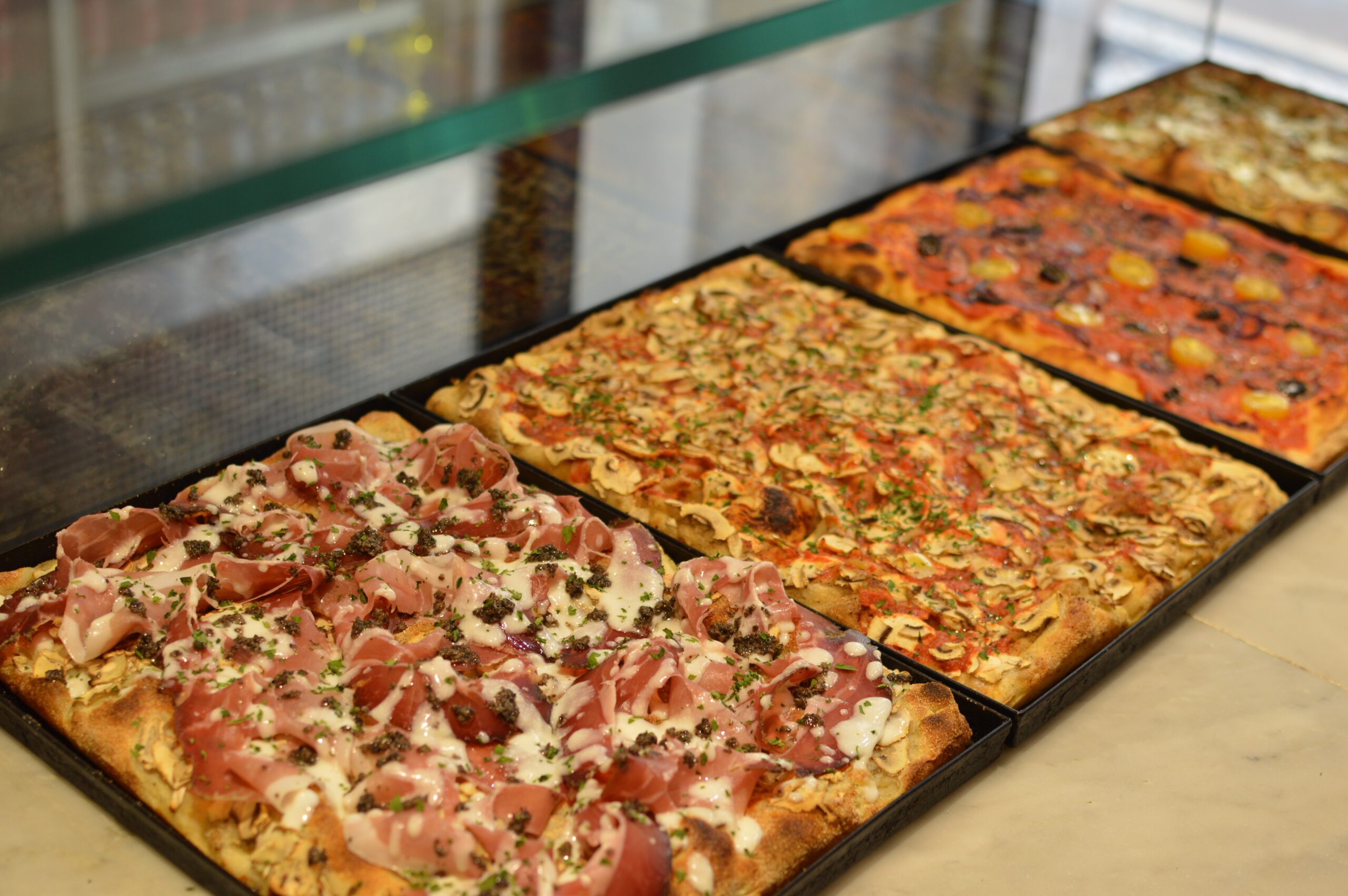
3. Don’t dine too early; Romans show up late
Like the Spanish, Romans are known for dining out late. Restaurants are usually open for lunch from 12 pm to 3 pm, and they open back up for dinner around 7:30 pm until 11:30 pm.
But if you want to eat like a local in Rome, don’t reserve for right when the restaurant opens! Instead, dine with the locals: Romans usually sit down for lunch around 1:30 pm, and we show up for dinner around 9 pm. In summertime, you can even expect us to go out for dinner at 10 pm!
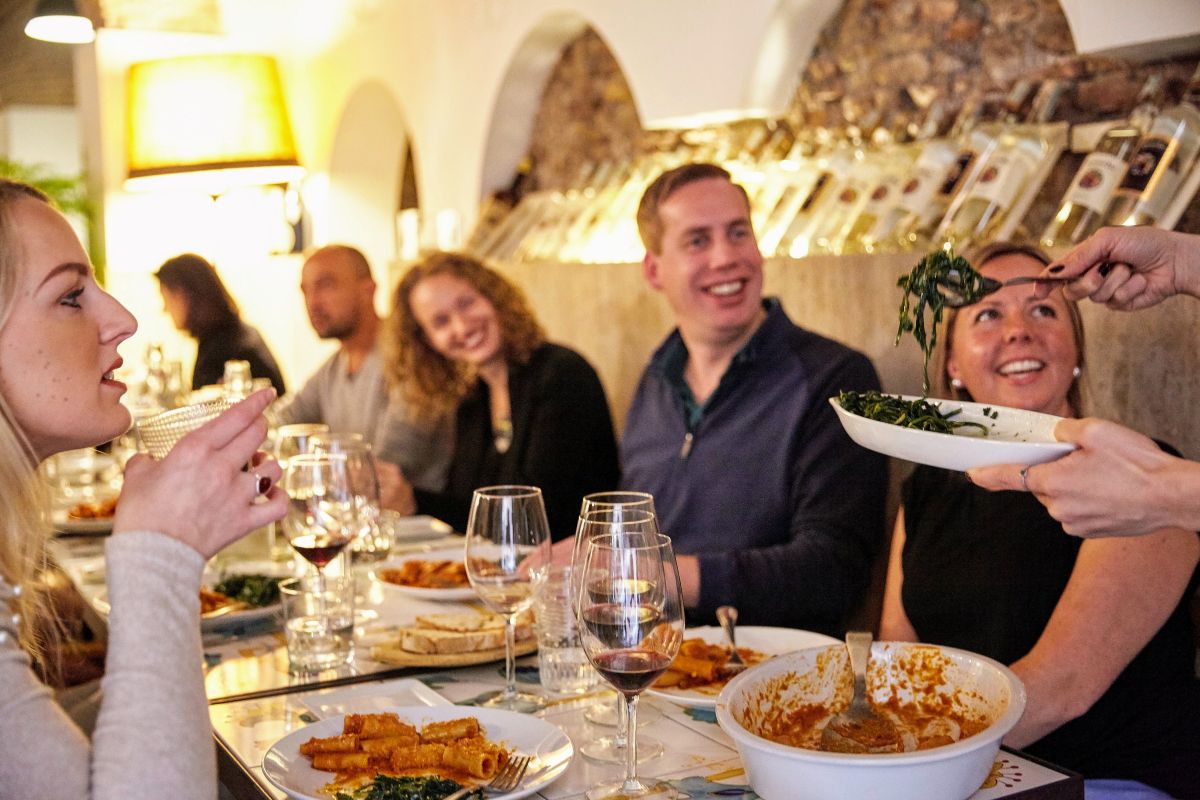
4. Take time to enjoy your food
Nobody likes slow service. But we’re no fans of being rushed in and out of a restaurant either. Enjoying your food is part of the whole “how to eat like a local” experience, which means that the minute you sit at your restaurant table, it’s time to relax and enjoy!
No need to order right away: take your time to go through the menu, and ask away if you’re undecided! Order a glass of wine, and just sit back and relax. When the food comes, enjoy every bite, because that’s how we do it in Rome!
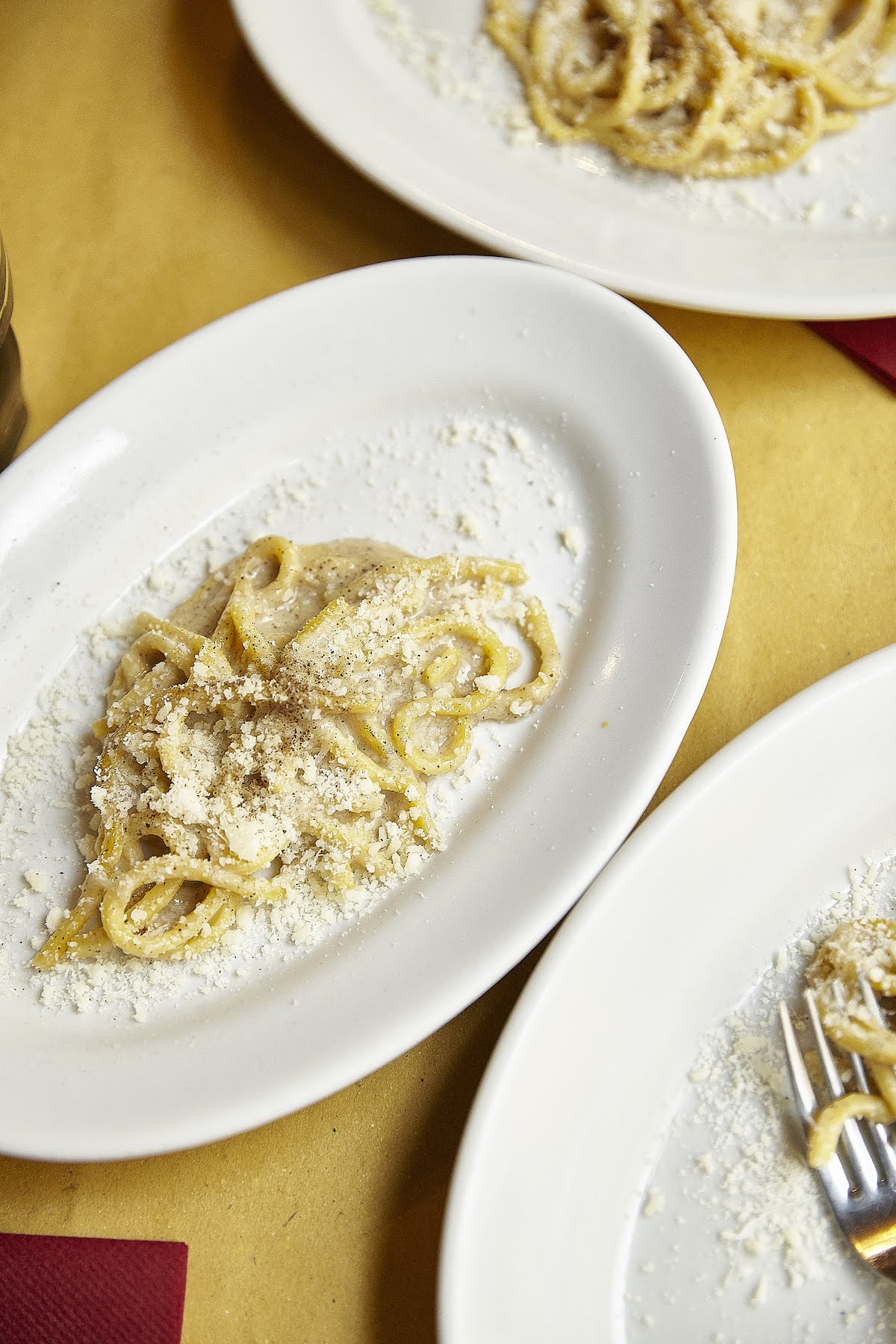
5. Stay away from the tourist traps
Part of experiencing Rome like the locals is dining where the locals do! Do you see many locals having lunch in Piazza Navona? Are there any Romans having their lunch break at the Trevi Fountain? No. Because, with very few exceptions, most of those restaurants are tourist traps.
Pictures on the menu, food on display, and crazy prices are things NOT to look for when searching for a restaurant in Rome. Instead of dining right in a touristy spot, stay off the beaten track, and get lost in one of the side streets. That’s where you’ll find authentic, top-quality food.
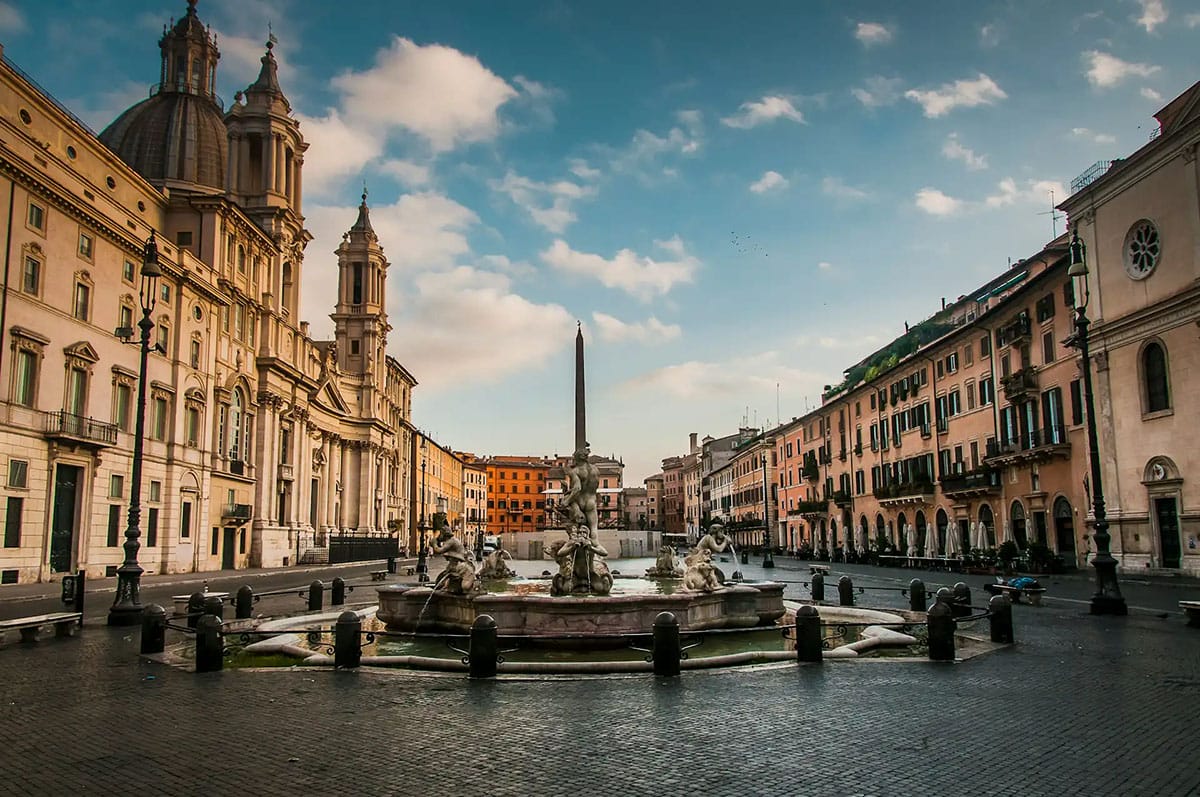
6. You don’t have to order a five-course meal
How much food should you order when eating out? You’ll see that menus are divided into antipasti (starters), primi (first courses), secondi (main courses), contorni (side dishes) and dolci (desserts).
But the idea that you have to order one dish per section is an urban legend! Romans usually order a starter, a first or second course and dessert.
An Aperol Spritz perfectly accompanies your favorite Italian dish.
7. Trattorias, osterias and ristorantes are not the same
While all three of these Italian eateries serve amazing food, it’s the experience (and the check) that’s quite different. Here’s the rundown on these different Roman eateries:
- Trattoria: This a rustic, no-frills, family-run restaurant that serves Roman specialties. From cacio e pepe to carbonara, this is the place to taste authentic Roman cuisine!
- Osterias: These places were meeting points for pilgrims who wanted to have a meal. They brought their own food and ordered wine from the osteria. Today, osterias are very much like trattorias: Roman specialties, informal service, generous portions and a rustic setting.
- Ristorantes: These establishments offer a professional service, more sophisticated and expensive food, and a more curated setting.
Insider Tip: Grab lunch in a trattoria or osteria and stop for dinner at a ristorante!

The Best Way to Eat Like a Local in Rome
Ready to try eating like a local in Rome for yourself? Our Testaccio Food & Market Tour is the perfect experience for curious foodies just like yourself.
Discover one of Rome’s most storied neighborhoods, where you’ll visit the bars, trattorias and gourmet shops that locals have been frequenting for generations. By the end of the experience, you’ll walk away with a deeper understanding of just what, exactly, it means to be Roman (and eat like one, too)!
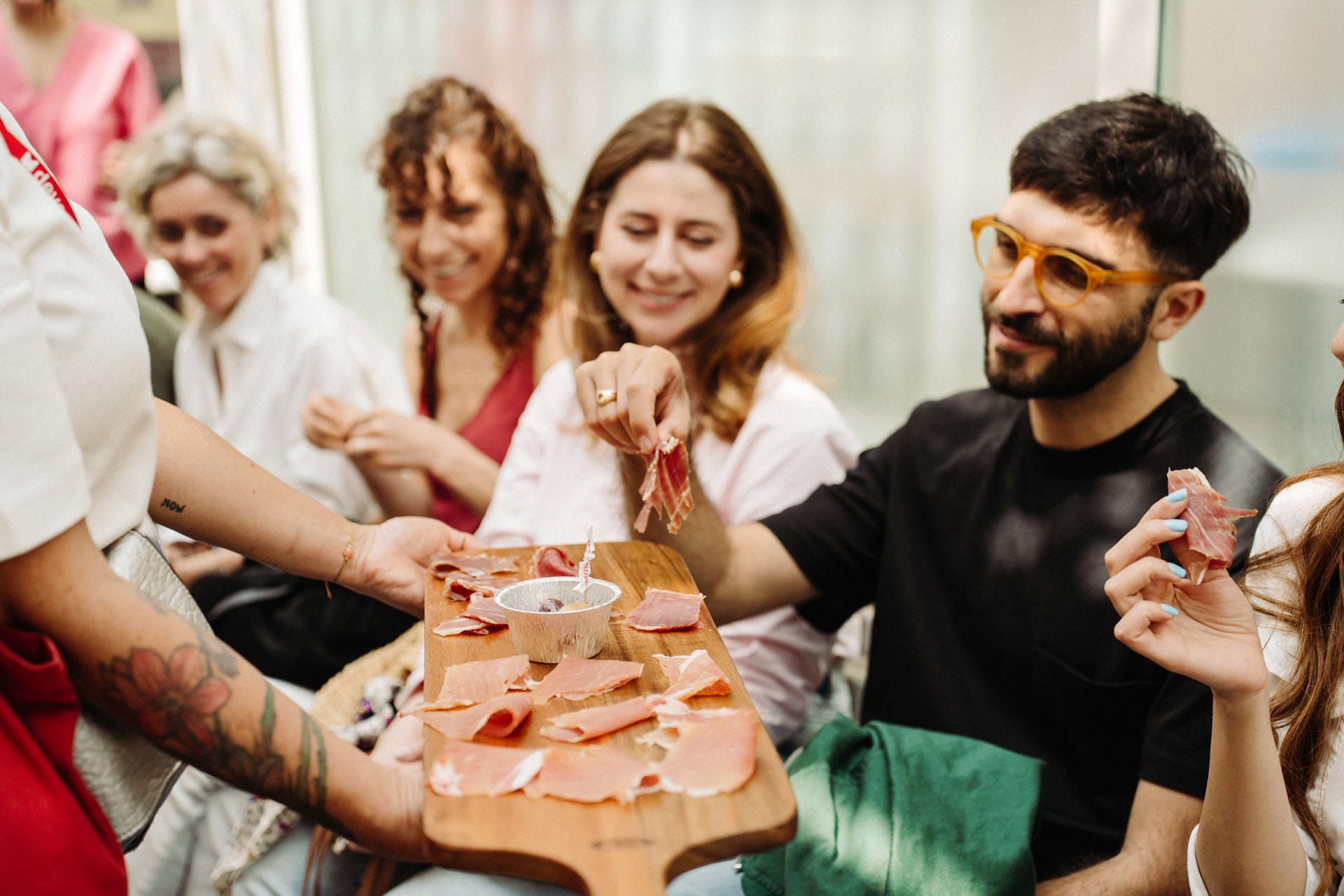
Featured Review: Testaccio Food & Market Tour
⭐⭐⭐⭐⭐ “Aurelio was amazing! We learnt so much about the local food and we were made to feel like a true local with the small numbers in the group. Aurelio spoke with passion about the source and process of how the food had come about. Do not have breakfast prior to the tour as you are very well fed! We got coffee and a pastry for breakfast, cheese and meats, bread, a sandwich, 3 types of pasta with wine and gelato to finish. I would highly recommend this tour!!”
– Alexandra on Tripadvisor
Eating Like a Local in Rome FAQs
What food is local to Rome?
Roman cuisine is known for its bold, rustic flavors and simple ingredients. Signature dishes include cacio e pepe, carbonara, and amatriciana—all classic pasta recipes showcasing local Pecorino Romano cheese and black pepper.
You’ll also find hearty dishes like saltimbocca alla Romana (veal with prosciutto and sage), carciofi alla Romana (braised artichokes), and trippa alla Romana (Roman-style tripe). Each dish reflects Rome’s culinary heritage of using high-quality, seasonal ingredients to create satisfying, timeless meals.
Can you eat cheaply in Rome?
Yes, it’s absolutely possible to eat well on a budget in Rome. Skip the touristy spots near major landmarks and look for street food, trattorias, pizzerias al taglio (pizza by the slice), or aperitivo bars where you can enjoy small bites with a drink for a great price.
Local markets like Campo de’ Fiori or Testaccio Market are also perfect for affordable, authentic meals. Even a simple plate of pasta alla gricia or supplì (fried rice balls) can deliver rich Roman flavor without breaking the bank.
What is the etiquette for eating in Italy?
In Italy, meals are meant to be enjoyed slowly and with appreciation. Always wait to be seated, don’t rush through courses, and avoid asking for substitutions unless you have a food allergy. Bread is eaten with the meal, not as a starter, and it’s polite to use it to fare la scarpetta (scoop up sauce) at the end.
When eating pasta, twirl it gently with your fork instead of cutting it, and never add cheese to seafood pasta. Pasta is served al dente and meant to be eaten right away, without bread on the side. Above all, relax, savor each bite, and enjoy the art of dining like an Italian.
